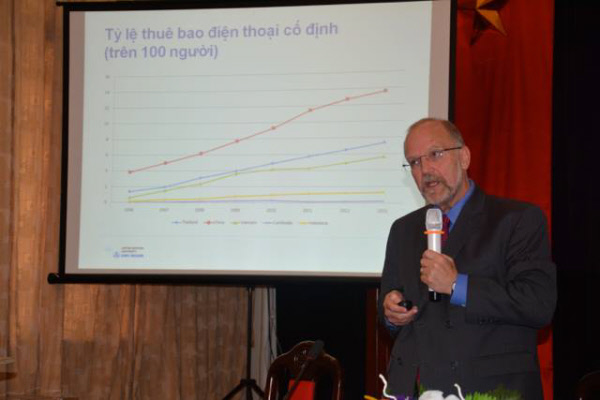The result of 10 years of research, in a collaboration between University of Copenhagen and Central Institute of Economic Management has been published (on 5 Aug 2015) in the report on Vietnamese rural households ‘Growth, Structural Transformation and Rural Change in Vietnam: A Rising Dragon on the move’. Danish Professor Dr Finn Tarp led the study team and has presented the key findings and recommendations from the report. The research has been conducted with support from DANIDA (Danish International Development Agency). The report provides in-depth examination of the development in rural areas in Vietnam, based on data collected over the past ten years from the same more than 2,000 households.

The 409 page synthesis report is based on five rounds of the Vietnam Access to Resources Household Surveys (VARHS) carried out with 2,162 households in 12 provinces in Vietnam every two years between 2006 and 2014.
VARHS includes an extensive number of ethnic and rural poor households that have been relatively excluded from traditional growth processes. This means that the evidence from VARHS can support the identification of policies for inclusive growth that leaves no group or minority behind; an objective which falls closely in line with recent international calls for a data revolution within the context of the post-2015 development agenda.
The provinces are: Ha Tay, Nghe An, Khanh Hoa, Lam Dong,
Dak Lak, Dak Nong, Lao Cai, Dien Bien, Lai Chau, Phu Tho, Quang Nam, and Long An.
The aims of the VARHS report are to:
- Provide an in-depth evaluation of the development of rural life in Vietnam over the past decade, combining a unique primary source of panel data with the best analytical tools available.
- Generate a comprehensive understanding of the impact of rural household access to markets for land, labour, and capital, on the one hand, and government policies on growth, inequality, and poverty at the village level in Vietnam, including the distribution of gains and losses from economic growth.
- Make available a comprehensive set of materials and studies of use to academics, students and development practitioners, including policy makers, interested in an integrated approach to the study of growth, structural transformation, and the microeconomic analysis of development in Vietnam.

Five key findings include:
- Living conditions: improved in general for rural households in absolute terms.
While VARHS confirms Vietnam experienced very significant poverty reduction in rural areas – this is not true (in absolute terms) for all (there are important numbers of households for whom the situation worsened). - Having a sufficient level of assets, including education, social capital, and productive assets is associated with a greater likelihood of becoming better off and the same goes for having more prime-age household members.
- Facing shocks and being of non-Kinh ethnicity cause significant reductions in food expenditure and other welfare indicators.
- Social capital and patronage relations important in Vietnamese politics and social and economic interactions.
- VARHS was implemented with support from Danida and is the result of 10 years of research collaboration between CIEM, ILSSA, IPSARD, University of Copenhagen and UNU-WIDER.
UNU-WIDER is the first research and training centre established in 1984 in Helsinki by the United Nations University (UNU). UNU is an international academic organization that promotes the UN’s aims of peace and progress by providing a framework to bring together leading scholars from around the world to tackle pressing global problems.
